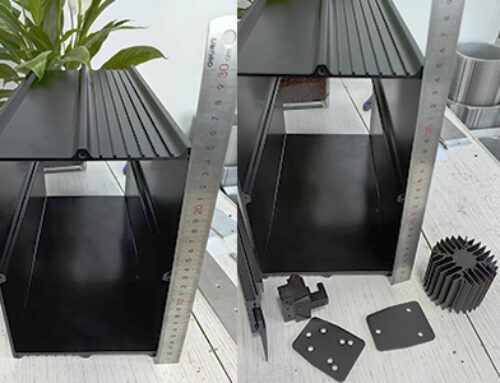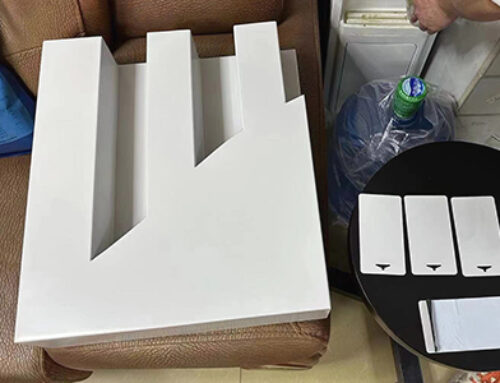Project Description
At the beginning of 2018, we reviewed 2017 and looked forward to the trend of aluminum prices in 2018. See Blog: Aluminium Price-Review 2017 is to Outlook 2018. Now, we are summing up the major events in China’s aluminum industry in 2018.
February 2018
Shandong Province: It was strictly prohibited to increase electrolytic aluminum production capacity and emphasize the emphasis on the development of the aluminum-intensive processing industry.
On February 13, Shandong province issued a notice on the implementation plan of major projects to convert old and new kinetic energy into new and old ones in Shandong, which calls for accelerating the exit of backward and inefficient production capacity in iron and steel, coal, electrolytic aluminum, tires, cement and other industries to make room for advanced production capacity. Prohibit illegal construction of electrolytic aluminum industry and new capacity, blindly adopt alternative to shut down, keep high production capacity and equipment, focus on developing the aerospace board (type), rail transit vehicle car body with aluminum, the modular parts of the body, high performance aluminum products such as sheet, strip, continue to maintain the world competitiveness aluminum deep processing industry.
March 2018
Ministry of Industry and Information Technology released “2018 industrial energy-saving monitoring key work plan”
March 6, the Ministry of Industry and Information Technology issued the “2018 industrial energy-saving monitoring key work plan”. The plan requires that, in accordance with the “notice of the Ministry of Industry and Information Technology of the People’s Republic of China of the National Development and Reform Commission on implementing the tiered pricing policy for electricity consumption in electrolytic aluminum enterprises” (No. 2530[2013]) , to carry out special monitoring of energy consumption of electrolytic aluminum enterprises. Special inspection in 2017 found that the energy consumption of iron, steel, cement, electrolytic aluminum enterprises and less than 2000 tons per day with the clinker production line of cement enterprises (with the implementation of special inspection violations of enterprise rectification).
The United States has announced high tariffs on imports of steel and aluminum
On March 8, at the White House in Washington, President Donald Trump announced that the United States would impose a 25% tariff on steel imports and a 10% tariff on aluminum imports. The tariff measures will come into effect in 15 days. The announcement triggered widespread opposition within the United States and internationally. Both high tariffs are imposed on the basis of “232 Investigations” conducted by the United States Department of Commerce. Under section 232 of the expanded trade act of 1962, the United States Department of Commerce has the power to initiate an investigation into whether an imported product has harmed the national security of the United States. The United States Department of Commerce launched “232 investigations” into imports of steel and aluminum products in April 2017 and submitted an investigation report to Donald Trump in January this year.
In October, we had a BLOG post devoted to the impact of a China-US trade war on Chinese aluminum consumption. See Blog: Impact of US Trade Sanctions on China’s Aluminum Consumption
Shanxi Province promoted the replacement of electrolytic aluminum production capacity, encourage aluminum, electricity and so on to Shanxi transfer production capacity.
China’s first smart extrusion line to be built
In March, China’s imports of aluminum alloy increased 9%, and the volume of exports decreased by 3%. See Blog: Imports & Exports of Aluminium in Mar 2018
April 2018
China’s alumina exports achieved zero breakthrough
In April, Chalco successfully signed the first metallurgical-grade alumina export order, breaking the history of China’s metallurgical-grade Alumina “only in” and taking a key step of metallurgical-grade alumina overseas market, a milestone. CHALCO Shandong enterprises as the first batch of 30,000 tons of orders the only designated supplier, product indicators have reached international standards. From January to April, the company sampling all alumina quality standards, the ex-factory pass rate reached 100%.
June 2018
The State Council prints and issues a three-year action plan for winning the Blue Sky Battle
On June 27, the State Council issued the three-year Action Plan for winning the battle to defend the blue sky. “Plan” requirements:
- Strict control of “two high” industrial capacity. Key areas strictly prohibit the new steel, coking, electrolytic aluminum, casting, cement, and flat glass production capacity; strict implementation of steel, cement, Flat Glass Industry Production Capacity Replacement; In principle, highway transportation shall not be used in construction projects involving bulk material transportation.
- We promoted the construction of key railway freight transport projects. Key enterprises such as iron and steel, electrolytic aluminum, electric power, coking and other enterprises should speed up industrial railway construction, make full use of existing industrial railway capacity, substantially increase the proportion of railway transportation, by 2020 the key areas to more than 50%.
July 2018
Iron and steel, non-ferrous metals and other four industries took the lead in fully releasing development power plans
On July 16, the National Development and Reform Commission and the National Energy Administration issued the Implementation Plan for the full liberalization of electricity generation and consumption plans for some key industries.
According to the plan, in 2018, China would select four power users in coal, iron and steel, nonferrous metals and building materials industries to take the lead in opening up the power consumption plan.
According to the plan, power users in these four industries followed the basic principle of “all should be released” and participate in the transaction of all their electricity; those who have the necessary conditions release their power consumption plans and prices simultaneously, and the users and power generation enterprises negotiate independently Agreed to establish a “benchmark price + floating mechanism” market price formation mechanism. Electricity users in key industries may appropriately reduce or exempt from cross-subsidies when conducting market-based transactions with clean energy; market participants participating in cross-provincial and cross-regional market-based transactions are encouraged to absorb the planned increase in the supply of Clean Energy. At the same time, the price of trans-provincial and trans-regional transmission can be reduced moderately through negotiation.
September 2018
Ministry of Ecological Environment “Beijing-Tianjin-Hebei and surrounding areas autumn-winter comprehensive air pollution control key action plan 2018-2019” published
September 27, the Ministry of Ecological Environment “Beijing-Tianjin-Hebei and the surrounding areas in autumn and winter 2018-2019 Integrated Air Pollution Control Action Plan” issued. The plan made it clear: for high-emission industries such as iron and steel, building materials, cooking, casting, non-ferrous and chemical industries, the unified cut-off ratio will be abolished, and the staggered production time will be determined according to local conditions and according to air quality conditions Implementation of the difference of peak production, is strictly prohibited to take “one-size-fits-all” approach. All provinces are required to formulate the guiding opinions of production performance evaluation and implementation plan for peak stagger production in key industries, specify the specific production line, process and equipment, and define specific safety measures.
October 2018
New Tax rebate policy: A variety of export commodities, including some aluminum rebate rate increases
Premier Li Keqiang presided over an executive meeting of the state council on October 8, which determined measures to improve the export tax rebate policy and accelerate the progress of tax rebate, so as to reduce the burden on enterprises and maintain steady growth of foreign trade. The meeting decided that from November 1, 2018, in accordance with the principle of structural adjustment and in line with the prevailing international practice, the current tax rebate rate of 15% on exports of goods and 13% on some goods will be raised to 16%. 9% to 10%, with some increasing to 13%; 5% to 6% and some to 10%. We will maintain the export tax rebate rate for energy-intensive, highly polluting, resource-intensive products and products facing the task of reducing production capacity.
According to the customs data, in 2017, China exported 826,000 tons of aluminum profile, 2.075 million tons of aluminum plate and strip, 1.16 million tons of aluminum foil, 136,000 tons of aluminum pipe, 879,000 tons of aluminum structure and components. The adjustment is expected to cover 13% and 15% of existing rebates for aluminum processing products.
On September 30, the Ministry of Finance and the State Administration of Taxation issued a notice saying that in order to push forward the reduction of production capacity, structural adjustment and promotion of industrial restructuring and upgrading, enterprises required to suspend production and close down or close down according to the policy of cutting production capacity and restructuring will be suspended from the next month Exemption from property tax, urban land use tax.
November 2018
Ministry of Industry and Information Technology: non-completed replacement of backward capacity from next year is not considered as compliant capacity
The Ministry of Industry and Information Technology has always attached great importance to the healthy development of the aluminum industry, focusing on the healthy and stable operation of the aluminum industry, Yu Wei, deputy director general of the Ministry of Industry and Information Technology of the People’s Republic of China, said at the 2018 International Aluminum Week held in Kunming on Nov. 14 The notice on implementing capacity replacement by means of promoting merger and reorganization in electrolytic aluminum enterprises was issued, and the application demonstration platform of new energy automobile materials was set up. Next step, will further promote the transformation and upgrading of the aluminum industry, aluminum industry to promote high-quality development, strict implementation of the replacement of production capacity policy. Backward capacity that has not been replaced by capacity from 2019 will no longer be regarded as compliant.
Ultra-high purity rare earth modified alumina was prepared for the first time in China
On November 25, the pilot project of rare Earth Modified High Purity Sapphire developed by the R & D team of Shanghai Jiao Tong University and materials science officially went into production Production Line for the first time to produce 5N (purity greater than 99.999%) high-purity alumina products. High-purity alumina is the high-end product of aluminum industry and the main raw material of artificial sapphire. In addition, high-purity alumina is also widely used in lithium battery separator, high-end phosphor powder, catalyst and semiconductor ceramics. The new project makes up for the gap in the international production technology of rare-earth high-purity aluminum and will make the high-purity aluminum industry chain and artificial sapphire industry chain run through.



